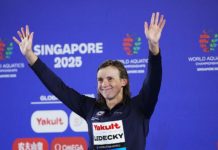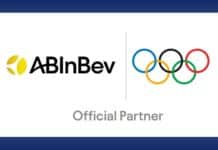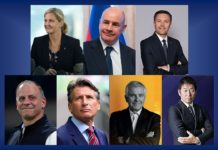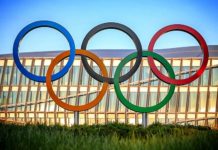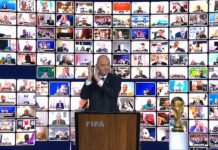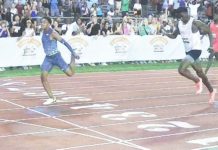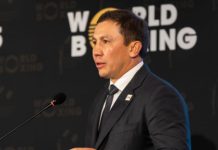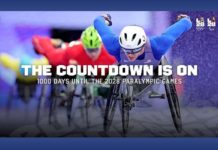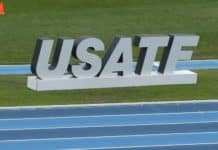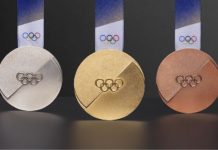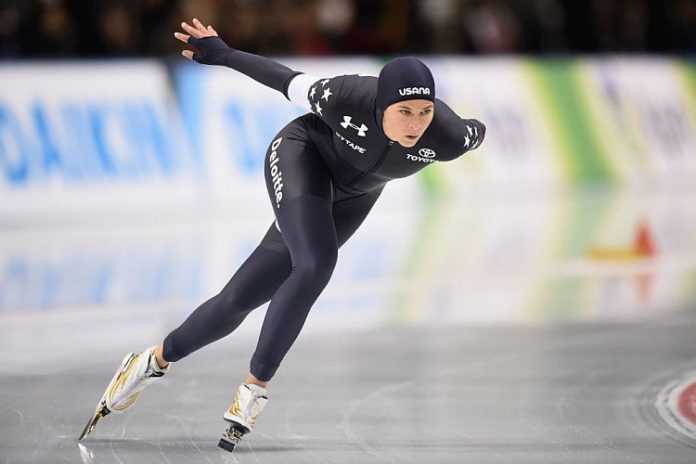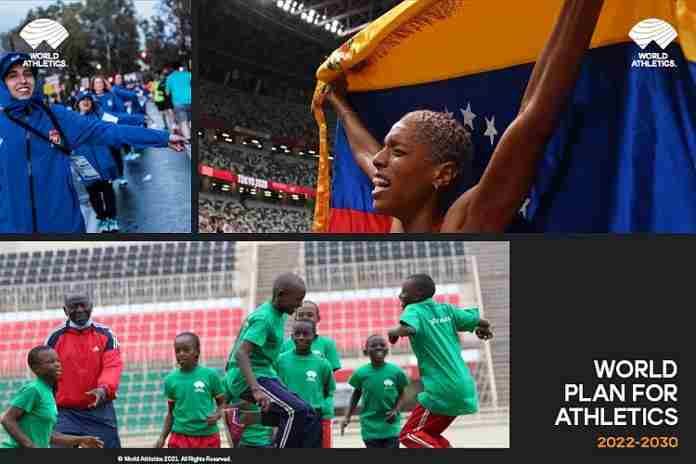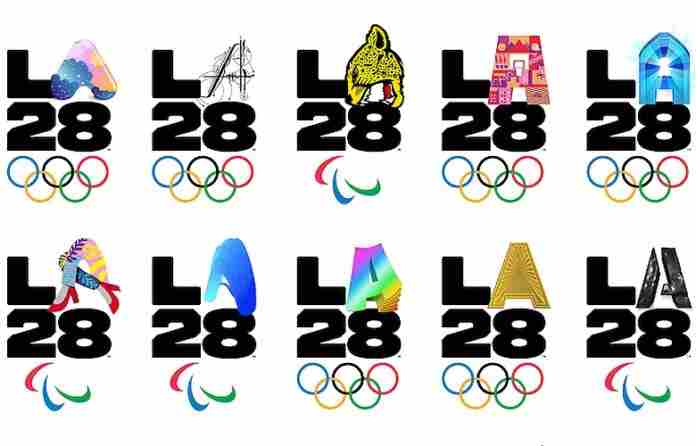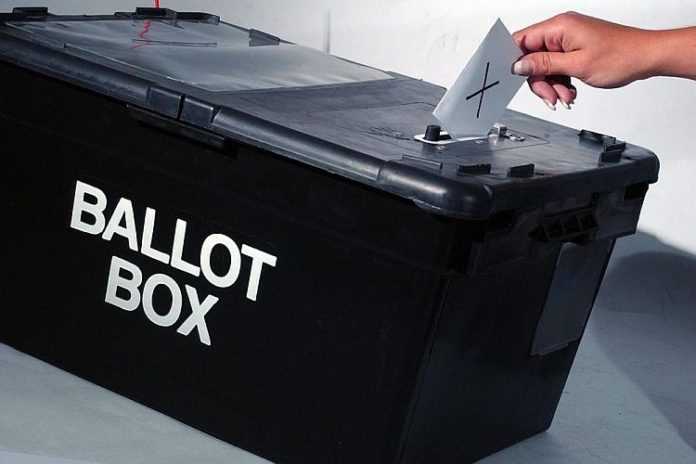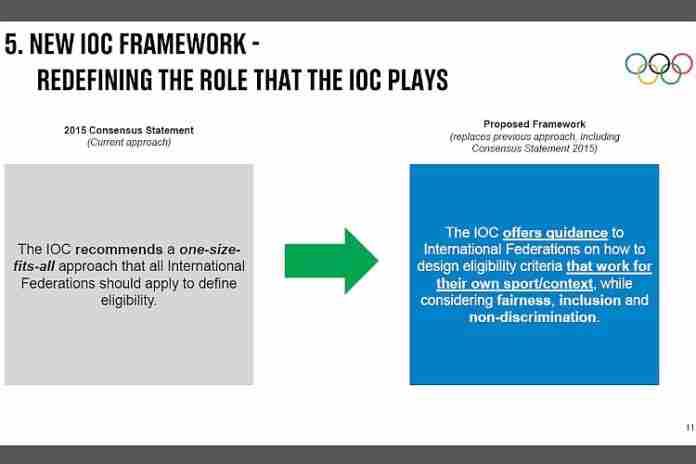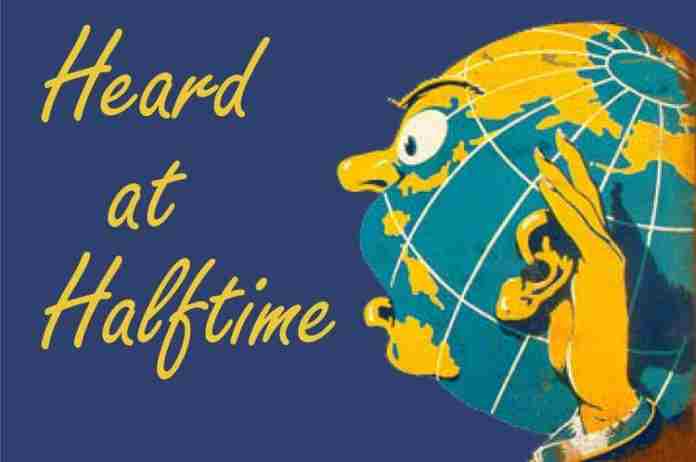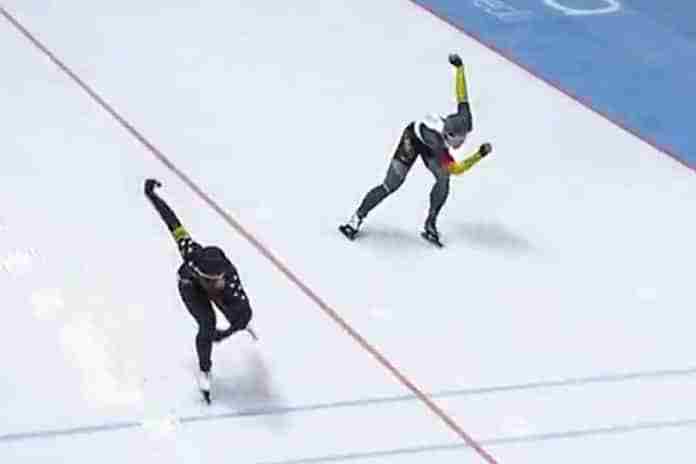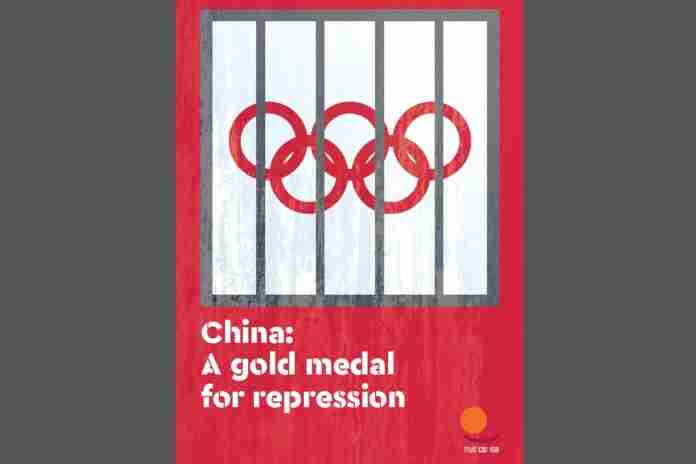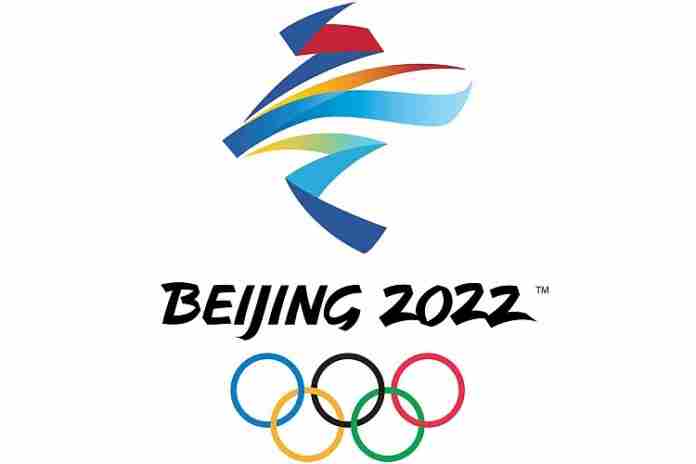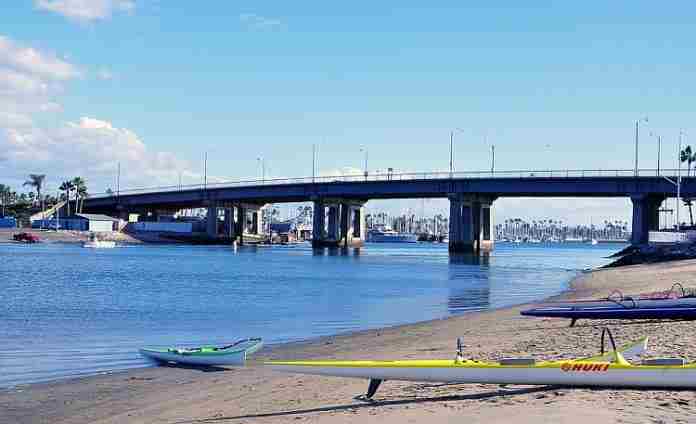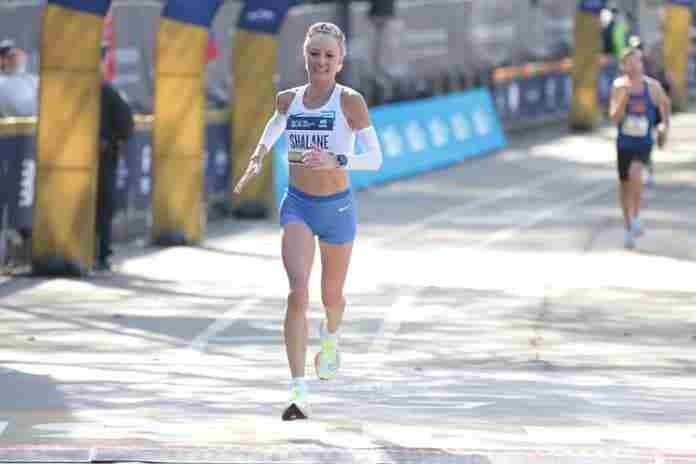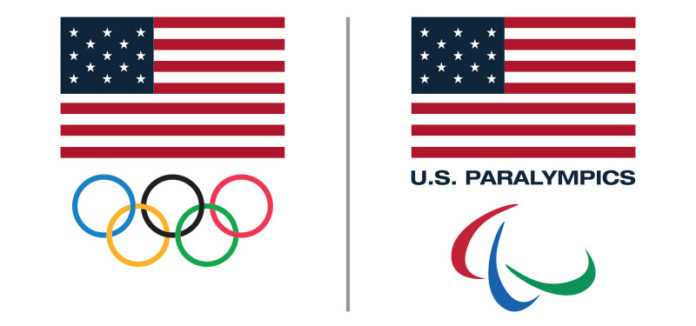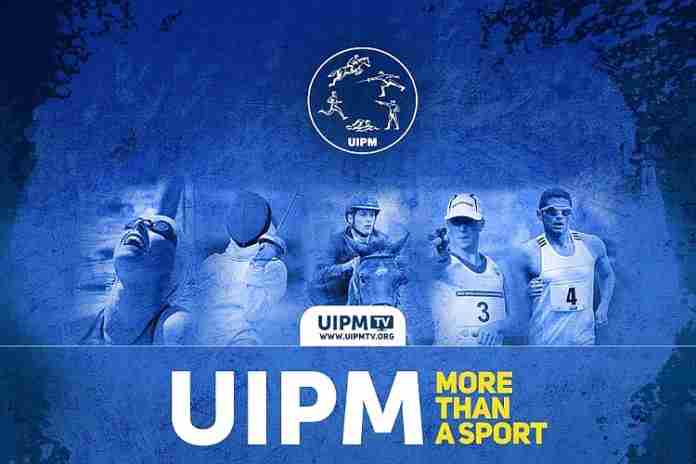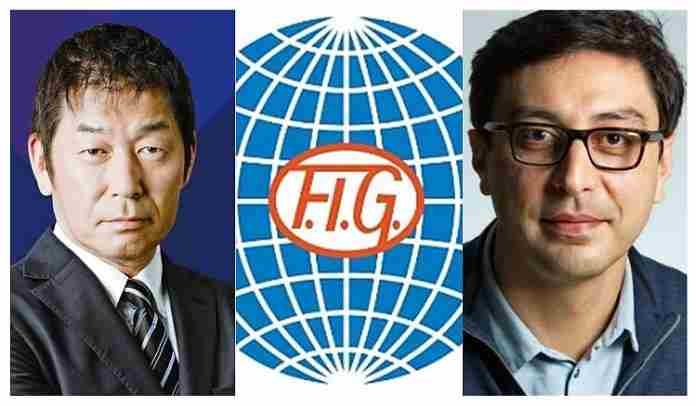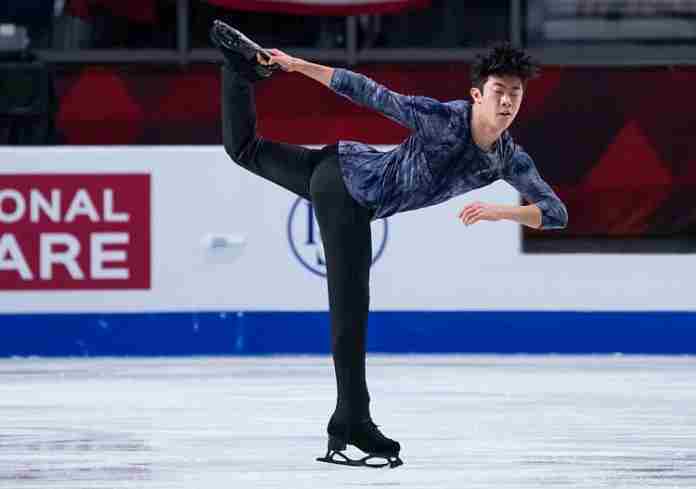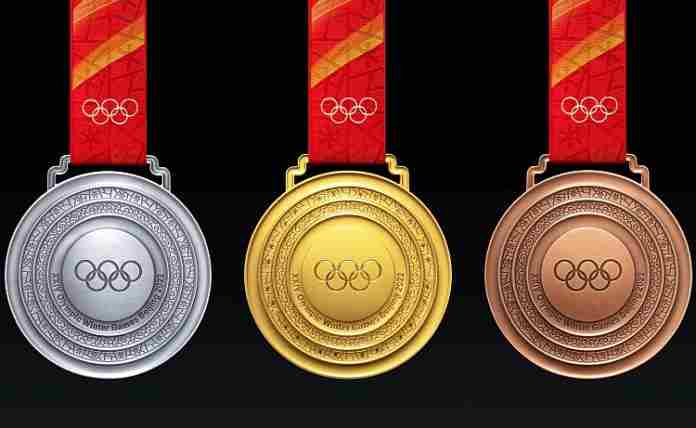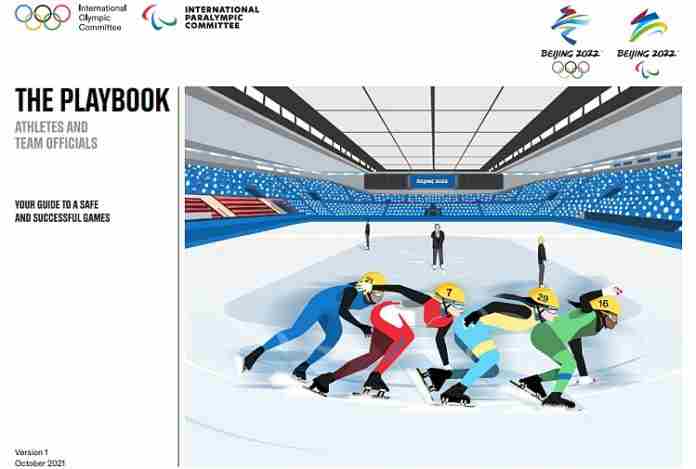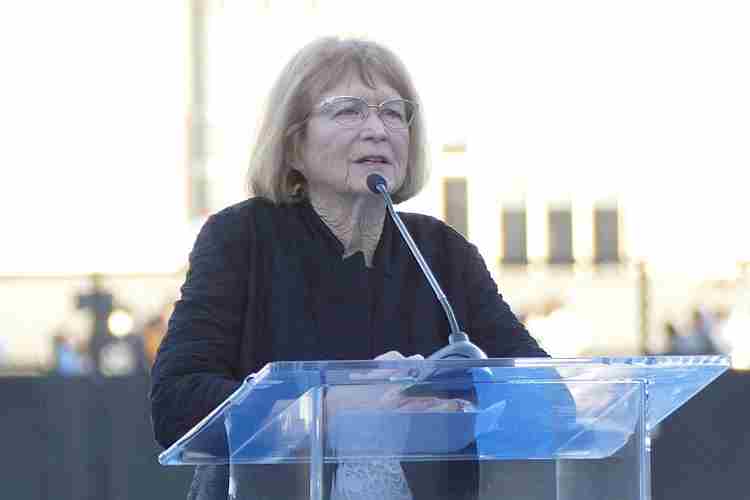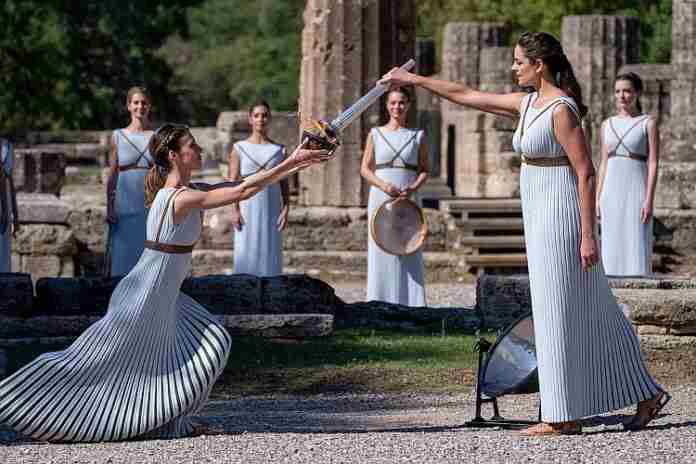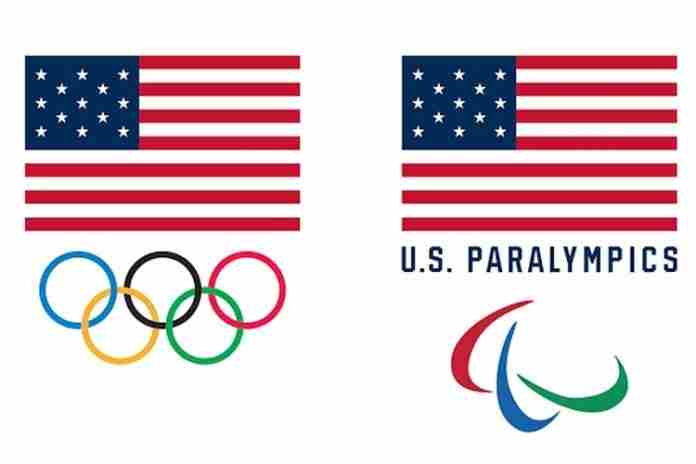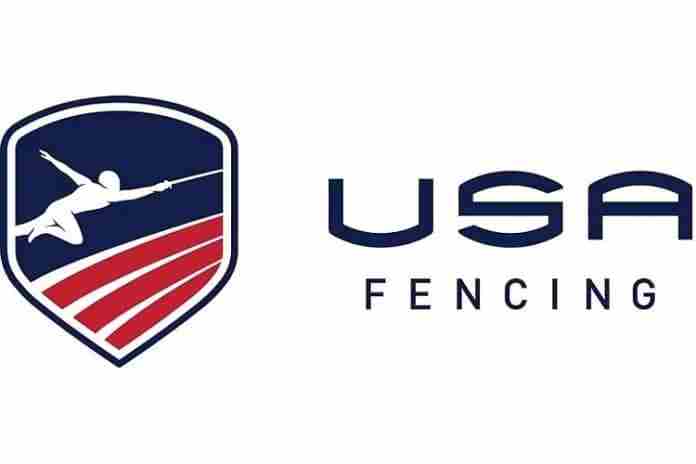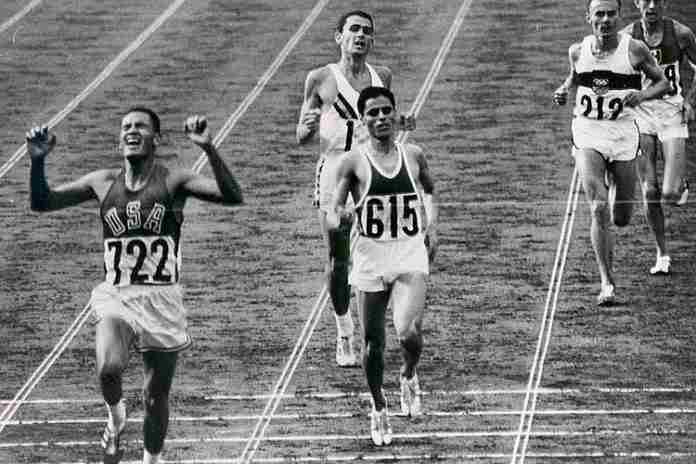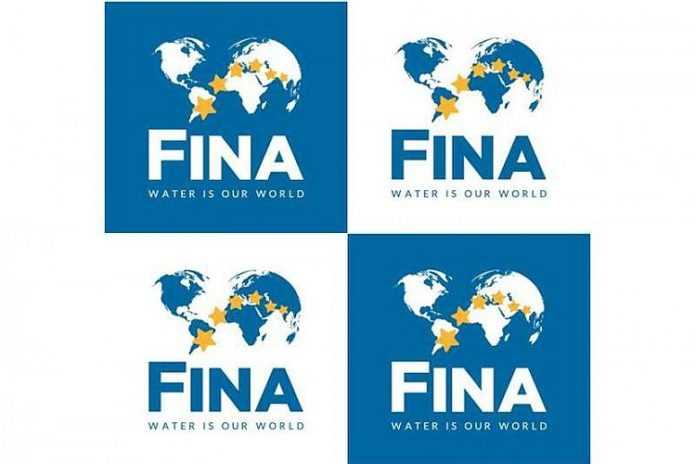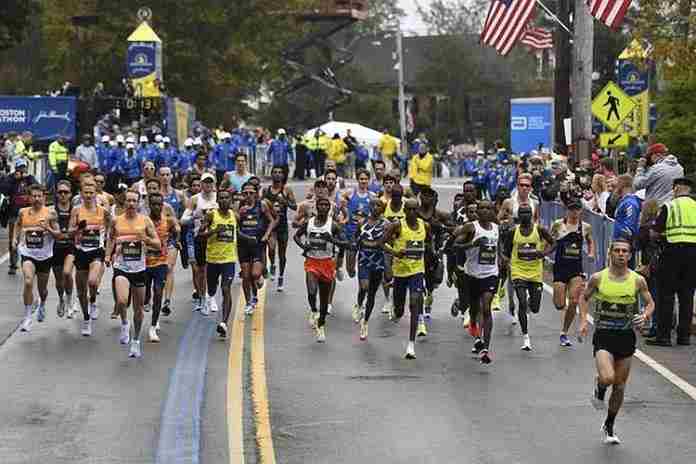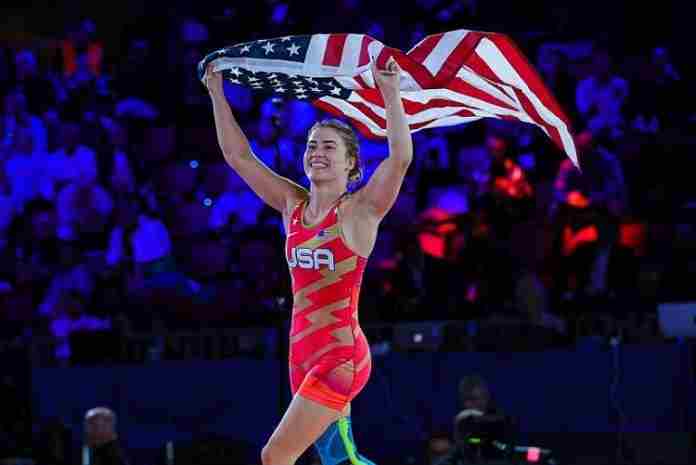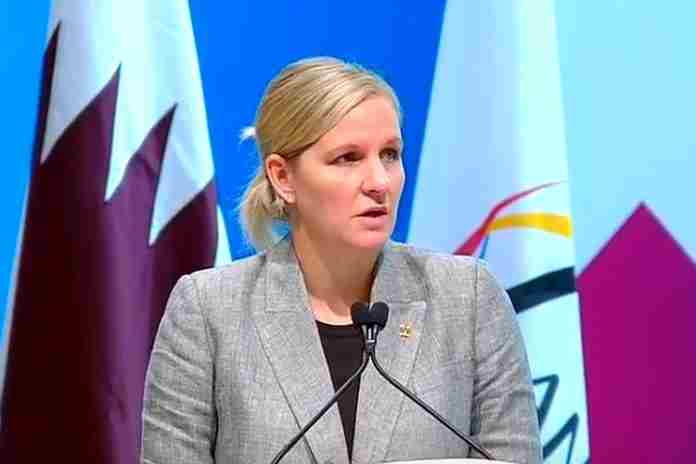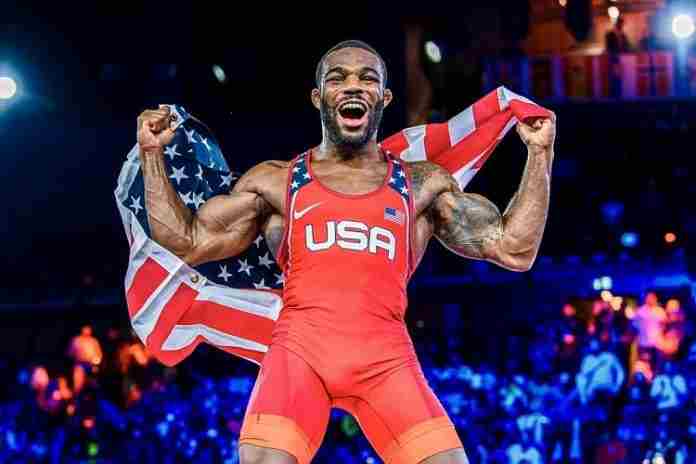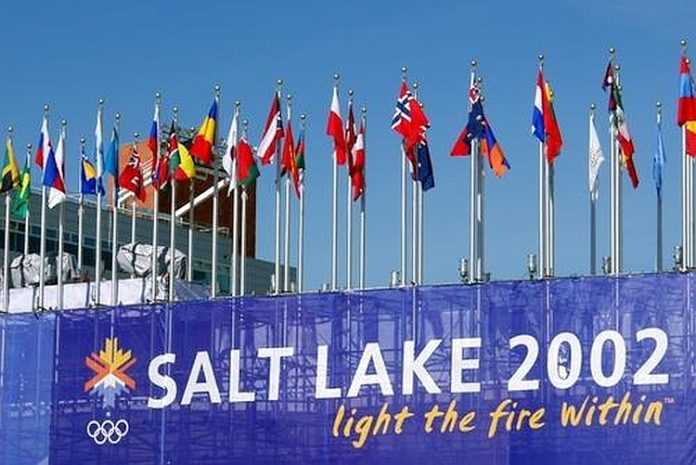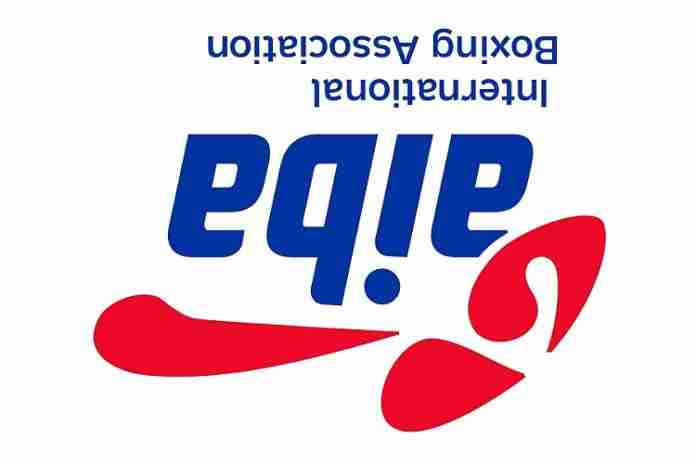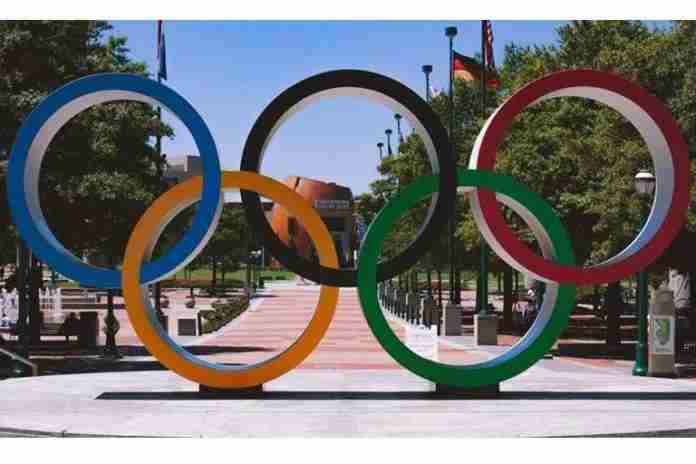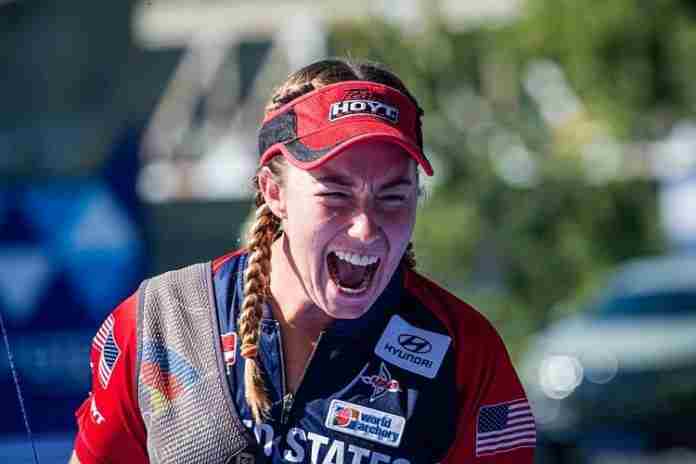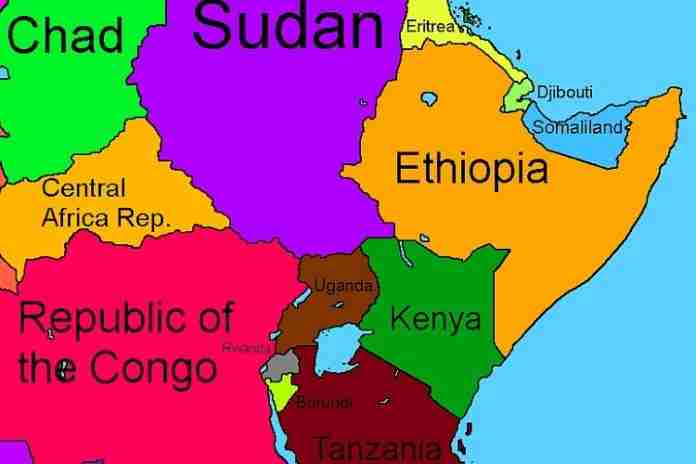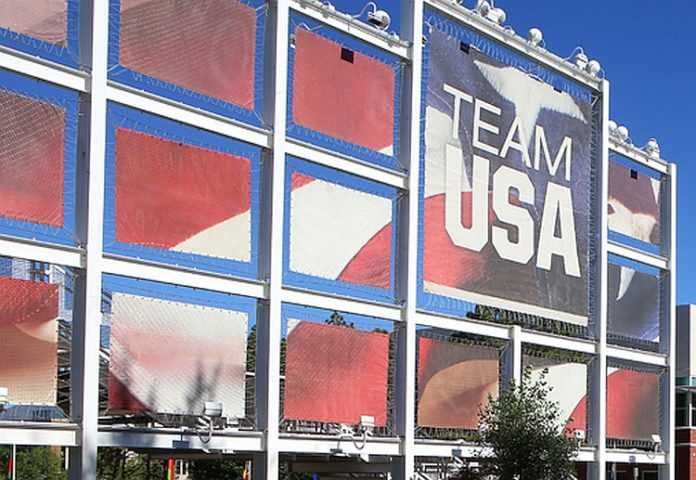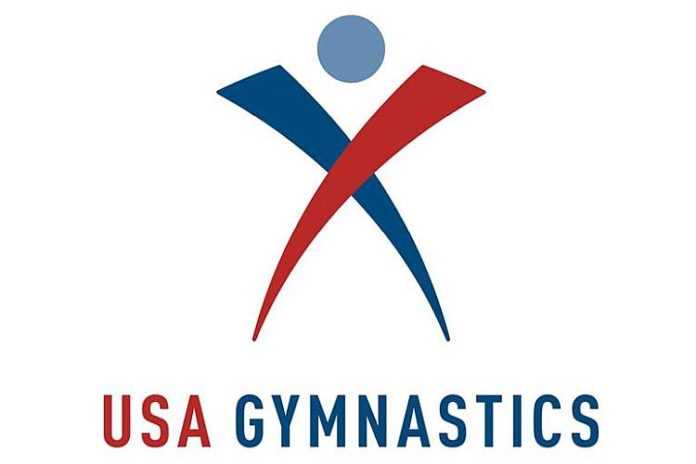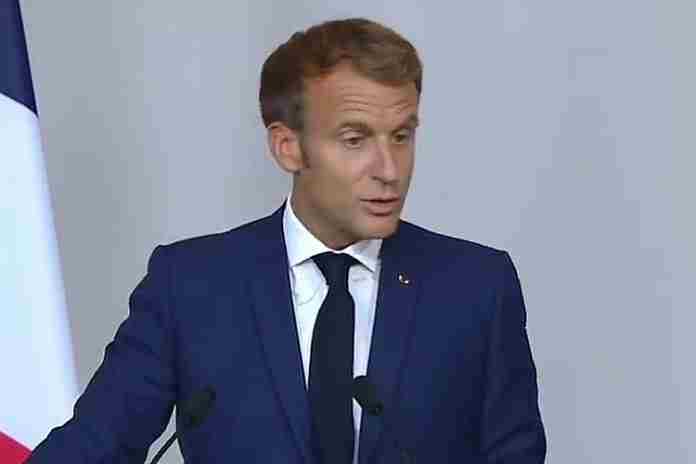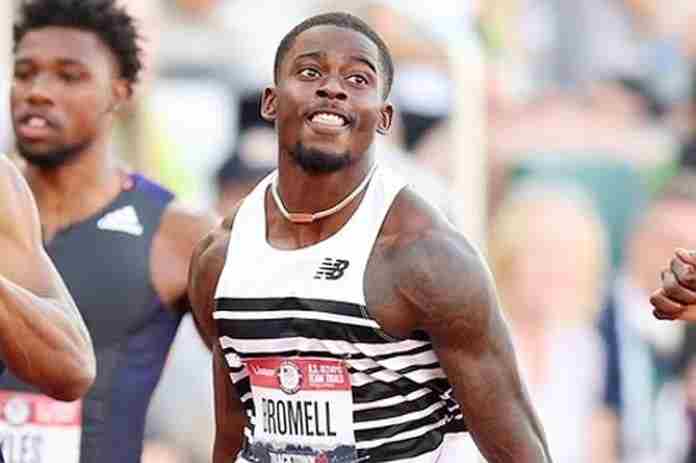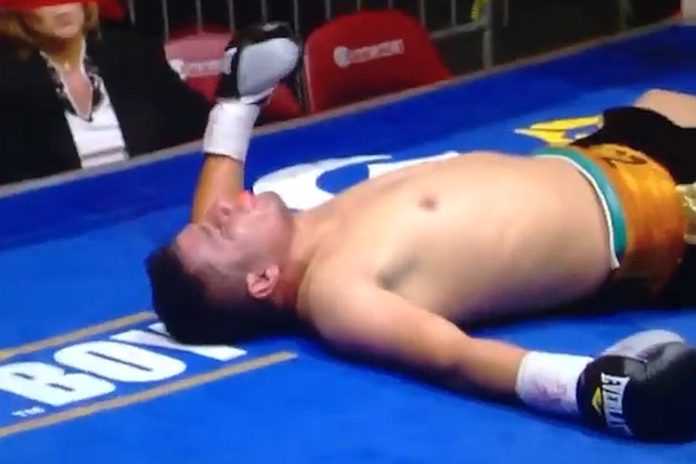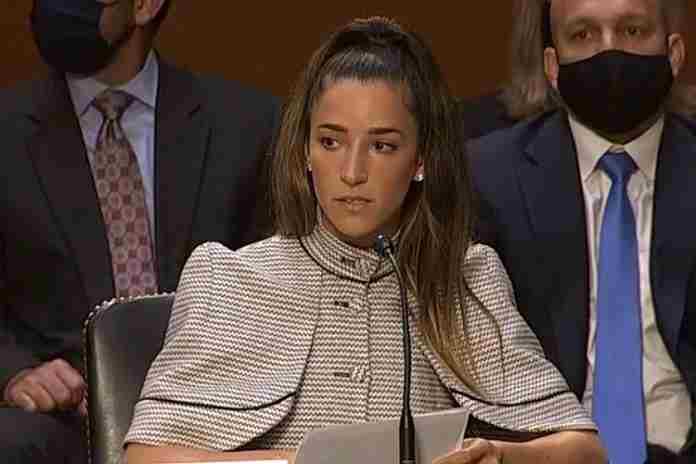Headline results of noteworthy competitions around the world/updated/:
● Alpine Skiing ● Two FIS Alpine World Cup slaloms for women were held in the north Finnish town of Levi on Saturday and Sunday, with the race offering a reindeer as a “prize” for the winner. Actually, the winner gets to name a reindeer, but it’s a pretty good promotional gimmick nonetheless.
On Saturday, Slovakian star Petra Vlhova had the fastest opening run at 52.15, just 0.11 ahead of American Mikaela Shiffrin. And after Shiffrin and German Lena Duerr both posted strong second runs, Vlhova zoomed to the fastest time on her final run, winning 1:46.19-1:46.50 over Shiffrin, with Duerr third.
On Sunday, the results were exactly the same! Vlhova led Shiffrin after the first run by 52.14-52.32, then won the second run at 53.08, while Shiffrin faded to sixth (53.37), but remained second overall, 1:45.22-1:45.69. Duerr was again third (1:46.00). It was Vlhova’s fifth win at Levi.
● Badminton ● Great fields at the Indonesia Masters in Bali, with four of the five top-seed entries making it to the finals, but only two of them won.
Now recovered from injuries, top-seeded Kento Momota (JPN) won the men’s Singles with an impressive 21-17, 21-11 win over third-seed Anders Antonsen (DEN). Momota was one of three Japanese winners, with Takuro Hoki and Yugo Kobayashi (JPN) upsetting top seeds Marcus Fernaldi Gideon and Kevin Sanjaya Sukamuljo (INA) in the men’s Doubles (21-11, 17-21, 21-19) and Nami Matsuyama and Chiharu Shida (JPN) winning the women’s Doubles over Na Eun Jeong and Hye Jeong Kim (KOR), 21-9, 21-11.
Top-seed Akane Yamaguchi (JPN) lost, however, in the women’s Singles final to Seyoung An (KOR), 21-17, 21-19.
In the Mixed Doubles, top-seeded Dechapol Puavaranukroh and Sapsiree Taerattanachai (THA) defeated Chun Man Tang and Ying Suet Tse (HKG), 21-11, 21-12.
● Bobsled & Skeleton ● The IBSF World Cup was in full swing in Innsbruck (AUT), with reigning Olympic champion Francesco Friedrich (GER) taking his eighth straight two-man victory – over two seasons – with a 1:42.85-1:43.32 win over fellow German Johannes Lochner. Britain’s Brad Hall was third (1:43.48); American Codie Bascue – with Carlo Valdes – was fifth (1:43.61).
Friedrich then won the four-man, his fifth win in a row on the circuit, timing 1:41.31 for two runs, ahead of Hall (1:41.57) and Lochner (1:41.57), who tied for second. The top American sled was driven by Hunter Church in eighth (1:42.04).
German sleds went 1-2 in the women’s two, with Laura Nolte driving the winner (1:46.22) ahead of Kim Kalicki (1:46.39), with Canada’s Christine de Bruin third (1:46.51). Americans Kaillie Humphries (with Sylvia Hoffman) and Elana Meyers Taylor (and Aja Evans) were fourth (1:46.52) and sixth (1:46.71).
Russia’s Sochi 2014 champion Alexander Tretiakov won the men’s Skeleton, 1:45.07-1:45.14 over six-time World Champion Martins Dukurs (LAT), with Christopher Grotheer (GER: 1:45.23). The women’s win went to Russia’s Elena Nikitina, her 13th career victory, finishing at 1:47.49-1:47.59 for Kimberley Bos (NED).
¶
The IBSF women’s Monobob World Series was also in Innsbruck (AUT), with an impressive 1-2 for Meyers Taylor and Humphries of the U.S. Meyers Taylor, three times an Olympic medalist with two women, won both runs to finish at 1:50.50 with Humphries, the two-time Olympic winner, at 1:50.63.
● Curling ● /updated/The 10-day U.S. Olympic Team Trials in Omaha finished on Sunday, with Tabitha Peterson advancing to Beijing, and the men’s berth coming down to a final match.
In the men’s division, reigning Olympic gold medalist John Shuster’s rink led the qualifying round with a 9-1 record, ahead of Korey Dropkin (7-3). The two squads split their two meetings.
In the championship series, Dropkin won the first match by 8-4, but Shuster came back with two points each in the final ends on Saturday night to win 7-3, and force a final match on Sunday.
The championship game was tightly played, with Shuster taking the lead with a single point in the third end and Dropkin tying in the fourth. Shuster then took two points out of the sixth end to go up 3-1, and another in the seventh and eighth for a 5-1 lead. Dropkin’s squad fought back with two points in the ninth end (5-3), but Shuster got one more in the 10th for a 6-3 final.
Shuster came into the final having won four of the six matches all-time with Dropkin-skipped teams; they played five times at the Trials, with Shuster winning three. How close were they? Dropkin’s quartet out-scored Shuster’s squad, 27-26 in the five matches, but Shuster, Matt Hamilton and John Landsteiner will get to defend their Olympic title (plus newcomer Chris Plys).
The women’s double round-robin saw Tabitha Peterson’s rink also roll up a 9-1 record, trailed by Cory Christensen’s team at 7-3. Peterson won both matches with Christensen at 8-5 and 9-4.
Peterson took the first match of the championship series by 8-7, with a point in the ninth end. Then she earned her second Olympic berth with points in the first two ends, three in the fourth and one in the fifth for a 6-2 lead. She closed with three points in the seventh and eighth ends and won the tournament with a 9-4 final.
Peterson’s quartet included Nina Roth, Becca Hamilton and sister Tara Peterson. Tabitha Peterson, Roth and Hamilton were all 2018 Olympians – with Roth as skip – finishing eighth in PyeongChang.
● Fencing ● The FIE World Cup had competitions in Epee in Tallinn (EST) for women and Berne (SUI) for men.
The women’s tournament had an all-French final, with Josephine Jacques Andre Coquin winning over Marie-Florence Candassamy, 15-11. It’s the second career World Cup win for Jacques Andre Coquin and her first since 2012! American Anna van Brummen tied for sixth.
The men’s final in Berne saw a rare South American win in a European venue for Venezuelan star Ruben Limardo Gascon, who defeated France’s Alexandre Bardenet in the final, 15-7. Limardo, 36, scored his fourth World Cup gold, winning previously in Colombia in 2006, and Argentina in 2009 and 2013. Bardenet, 31, reached his first World Cup final since his only win in 2019.
● Figure Skating ● The fifth leg of the ISU Grand Prix was in Grenoble at the Internationaux de France with the home favorites Gabriella Papadakis and Guillaume Cizeron dominating the Ice Dance.
The four-time World Champions won both the Short Program and Free Skate and totaled 221.25 points to win convincingly over Piper Gilles and Paul Poirier (203.16) and Alexandra Stepanova and Ivan Bukin (RUS: 200.29). Americans Christina Carreira and Anthony Ponomarenko were fifth (175.91).
Japan enjoyed a 1-2 finish in the men’s skating, with Yuma Kagiyama winning his second straight Grand Prix event, 286.41-264.99 over countryman Shun Sato. American Jason Brown was third at 264.20.
Russia went 1-2 in the women’s division, with Anna Shcherbakova scoring 229.69 (despite a fall in the Free Skate) over Alena Kostornaia (221.85). Wakaba Higuchi (JPN) was third at 204.91, with Americans Karen Chen (194.00) and Mariah Bell (190.79).
Russia also went 1-2 in Pairs, as Aleksandra Boikova and Dmitrii Kozlovskii defeated Iulliia Artemeva and Mikhail Nazarychev, 216.96-205.15, with Americans Alexa Knierim and Brandon Frazier third (201.69).
● Freestyle Skiing ● The Freestyle World Cup resumed this weekend with Slopestyle events in Stubai (AUT), with Estonian teen Kelly Sildaru winning her fourth World Cup title and second at Stubai. She scored 88.68 points to finish ahead of Swiss Sarah Hoefflin (80.30) and Johanne Killi (NOR: 78.32).
Norway’s 2019 Worlds silver medalist Birk Ruud won the men’s Slopestyle at 87.60, ahead of Max Moffatt (CAN: 86.26) and fellow Norwegian Ferdinand Dahl (86.06). Ruud, 21, captured his sixth career World Cup victory.
● Gymnastics ● The 35th Trampoline Worlds were on in Baku (AZE) this week, with China winning its 11th straight men’s individual title, but this time with Langyu Yan, a first-time World Champion.
Yan scored 61.825 to win over Ryusei Nishioka (JPN: 60.620) and Aleh Rabtsau (BLR: 60.385).
Britain’s Bryony Page, the Olympic bronze medalist, won her first women’s title, scoring 56.235 to defeat China’s Yunzhu Cao (55.815) and Russia’s Iana Lebedeva (55.800).
Among the non-Olympic finals, Vasili Makarsvili (RUS) won the men’s Double Mini, with American Ruben Padilla third. Swede Lina Sjoeberg won the women’s DM (70.900), ahead of American Shelby Nobuhara (70.000). In Tumbling, Russian Aleksandr Lisitsyn won the men’s division (80.000 popints), with American Kaden Brown third (75.400); Megan Kealy (GBR) won the women’s division.
● Luge ● The FIL World Cup was at the Olympic track in Yanqing (CHN), with Germany taking the top three in the men’s Singles, with Johannes Ludwig (1:54.597), six-time World Champion Felix Loch (1:55.451) and Max Langenhan (1:55.455). Tucker West was the top American in 21st (1:56.742).
Germans Toni Eggert and Sascha Benecken took the men’s Doubles over Austria’s Thomas Steu and Lorenz Koller, 1:57.610-1:57.819.
Sunday’s women’s Singles saw Austria’s Madeleine Egle take an upset win over Germany’s Julia Taubitz, 1:58.822-1:58.928, with Lisa Schulte (AUT) third in 1:59.350. Ashley Farquharson was the top American, eighth in 1:59.867.
● Sailing ● /Updated/A tripleheader of World Championships was held in Oman, for the 49er, 49er FX and Nacra 17 classes, all part of the Tokyo 2020 Games.
The men’s 49er class was a tight battle, with Bart Lambriex and Floris van de Werken (NED) just edging Germans Tim Fischer and Fabian Graf, 92.0-94.0. Lambriex and van de Werken won the medal race, which provided the final margin. Danes Frederik Rask and Jakob Precht Jensen took third, 112.0-113.0 over Ian Barrows and Hans Henken of the U.S.
The women’s 49er FX was another Dutch victory, with Odile van Aanholt and Elise Ruyter scoring a net 75.0 points, ahead of Helene Naess and Marie Ronningen (NOR: 83.0) and Tokyo gold medalists Martine Grael and Kahena Kunze (BRA: 94.0). Van Aanholt and Ruyter finished in the top three in eight of the 16 races.
In the Nacra 17 mixed multihull championship, Tokyo silver winners John Gimson and Anna Burnet took the title at 61.0 (eight top-3s in 17 races), followed by Gianluigi Ugolini and Maria Giubilei (ITA: 70.0) and Paul Kohlhoff and Alica Stuhlemmer (GER: 77.0).
● Short Track ● The ISU World Cup was in Debrecen (HUN), with seven-time World Champion Suzanne Schulting stamping herself again as a major contender in Beijing next February with statement wins in the 500 m, 1,000 m and 1,500 m.
On Saturday, she took the 500 m at 42.566 over Italy’s Arianna Fontana (42.801) and the 1,500 m over Korean Yubin Lee, 2:23.009-2:23.101. American Kristen Santos was sixth in the 1,500 m in 2:23.530. On Sunday, she came back to win the 1,000 m in 1:31.475 with Korean star Minjeong Choi second (1:31.789). Very impressive.
In the men’s skating, the Hungarian siblings Shaolin Sandor Liu and Shaoang Liu went 1-2 in the 500 m, at 40.955 and 40.965. China’s Ziwei Ren won the 1,500 m, timing 2:12.910 to beat Canada’s Pascal Dion (2:13.048). Korean Daeheon Hwang won the men’s 1,000 m in 1:25.425 over Dion (1:25.698).
● Speed Skating ● “When I crossed the line, I was kind of disappointed. It didn’t feel like a solid race, and the time didn’t seem like something that would be the winning time. I did not expect that to be the winning time.”
But a winner it was, with American Erin Jackson taking her third straight ISU World Cup victory at 500 m, again over Japan’s reigning Olympic champ Nao Kodaira, 37.602-37.708 in Stavanger (NOR).
Kodaira promised a win in Sunday’s second women’s 500 m and she delivered, in 37.253 to Jackson’s 37.761 for silver. Russian Angelina Golikova was third (37.712).
Six-time World Champion Brittany Bowe of the U.S. won her second straight World Cup in the women’s 1,000 m, finishing in 1:14.168 to edge Japan’s Miho Takagi (1:15.014) and Kodaira (1:15.161). American Kimi Goetz (1:16.139) was eighth.
Takagi came back to win the women’s 1500 m in 1:55.679, ahead of Dutch legend Ireen Wust (1:56.251) and Ayano Sato (JPN: 1:56.515). Bowe was seventh (1:57.316). Irene Schouten of the Netherlands took the women’s 5,000 m in 6:52.837 (track record), well ahead of Canada’s Isabelle Weidermann (6:54.953).
Canada’s Laurent Debreuil took the first men’s 500 m in 34.573 against 34.608 for Russia’s Artem Arefyev; Japan’s Tatsuya Shinhama won his second race of the season on Sunday in 34.578 over Dubreuil (34.610).
Dutch stars swept the men’s 1,000 m, with Thomas Krol (1:08.661) finishing ahead of Kai Verbij (1:08.688) and Kjeld Nuis (1:08.741). China’s Zhongyan Ning won the 1,500 m over American Joey Mantia, 1:45.167 to 1:45.552. Swede Nils van der Poel again won the 10,000 m in a track record 12:38.928, more than 17 seconds better than 2014 Olympic champ Jorrit Bergsma (NED: 12:56.088). Wow!
● Ski Jumping ● The FIS World Cup season opened off the 134 m hill in Nizhny Tagil (RUS), with the 10th individual win for German Karl Geiger, who out-scored former World Cup winner Ryoyu Kobayashi (JPN), 252.4-243.7. Norway’s Halvor Egner Granerud was third (239.7).
Sunday’s jumping saw Granerud take his 12th individual World Cup win from Geiger, 235.3-226.5, with Austria’s three-time World Champion Stefan Kraft third (223.8).
● Swimming ● The second set of ISL playoff matches were held in Eindhoven (NED), starting with the Thursday-Friday match that saw Energy Standard (FRA: 583.0) take care of the field, with Toronto (407.0) second, the Aqua Centurions (ITA: 390.0) third and D.C. Trident fourth (383.0).
The star was Hong Kong’s Siobhan Haughey, who won the 100-200-400 Freestyles for Energy Standard, and swam the second-fastest 200 m Free ever in a 25 m (short course) pool at 1:50.66, just 0.23 behind the 2017 mark by Sarah Sjostrom (SWE).
Sjostrom also won three events, taking the 50 m Free, the 50 m Free Skins race and the 50 m Fly, plus seconds behind Haughey in the 200 m Free and Louise Hansson (SWE) in the 100 m Fly. Also winning three was Canadian Backstroke star Kylie Masse (50-100-200 m).
The top men’s performers included five two-event winners: 50-100 m Backstroke winner Mark Nikolaev (RUS), fellow Russian Aleksandr Shchegolev (100-200m Free), countryman Kliment Kolesnkov (100 m Free-200 m Medley), plus Matteo Rivolta (ITA) in the 50-100 m Fly and Ilya Shymanovich (BLR) in the 100-200 m Breast.
The weekend match featured defending champs Cali Condors, with U.S. superstar Caeleb Dressel back in the pool for a couple of events.
The team battle came down to the Condors and the London Roar, with the Roar winning at 534.5 points to 474.5, and the L.A. Current third at 438.5.
The individual stars included three-event winners Kyle Chalmers (AUS: 50-100-200 m Frees), American Ryan Murphy (50-100 m Backstrokes and 50 m Skins), Britain’s Duncan Scott in the 400 m Free and 200-400 m Medleys, and American breaststroke star Lilly King (50-100-200 m).
Among the two-event winners: sprint star Kira Toussaint (NED) in the women’s 50 m and 100 m Backstrokes, Sydney Pickrem (CAN) took the 200-400 m Medleys and American Hali Flickinger won the 400 m Free and 200 m Fly.
Dressel won the 100 m Medley and was third in the 50 m Free in his two individual events.
There are two more playoff matches this coming week, prior to the final in December.
● Table Tennis ● At the Pan American Champs in Peru, Brazil took three golds to lead all nations, with Puerto Rico claiming two.
In the men’s division, Hugo Calderano (BRA) won the Singles over Eugene Wang (CAN), 4-2, and Argentina’s Gaston Alto and Horacio Cifuentes took the Doubles, 3-1, over Juan LaMadrid and Gustavo Gomez (CHI).
Puerto Rico’s Adriana Diaz took the women’s Singles over Bruna Takahashi (BRA), 4-3 and then teamed with Melanie Diaz in the Doubles, defeating Daniela Ortega and Paulina Vega (CHI) 3-2.
In the Mixed Doubles, Brazil’s Vitor Ishiy and Takahashi were 3-1 winners over Horiacio Cifuentes and Camilla Arguellas of Argentina. In the team finals, Brazil topped Chile, 3-1, in the men’s final and Brazil defeated Canada, 3-1 in the women’s championship match.
● Tennis ● In the season-ending ATP Finals in Turin (ITA), Germany’s no. 3 seed Alexander Zverev defeated defending champion Daniil Medvedev (RUS), 6-4, 6-4, for the Singles title. France’s third-seeded Pierre-Hugues Herbert and Nicolas Mahut edged Rajeev Ram (USA) and Joe Salisbury (GBR) in the Doubles, 6–4, 7–6.
You can receive our exclusive TSX Report by e-mail by clicking here. You can also refer a friend by clicking here, and can donate here to keep this site going.
For our 743-event International Sports Calendar for 2021 and beyond, by date and by sport, click here!


